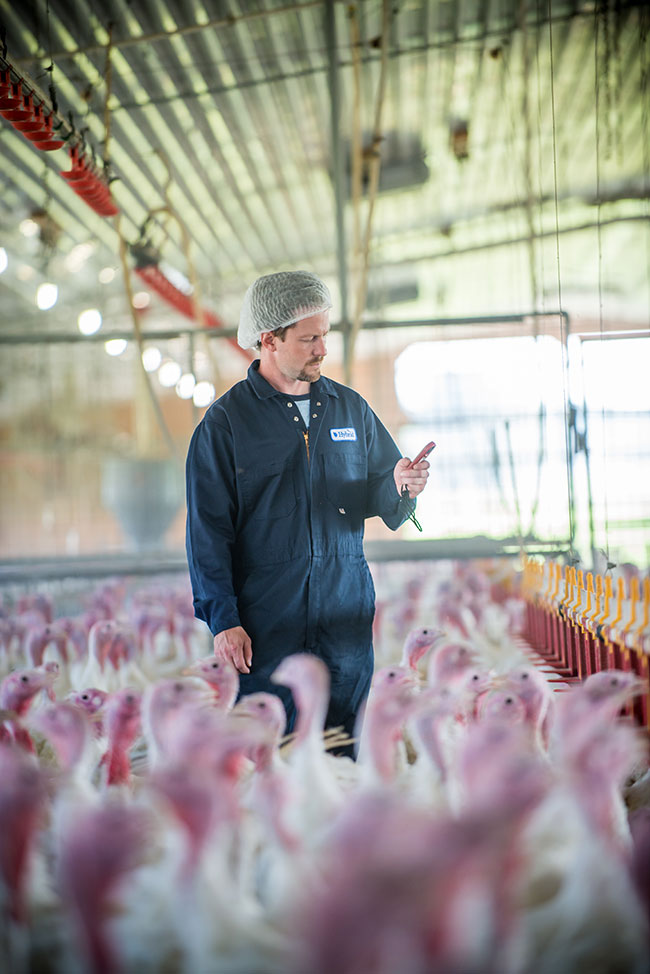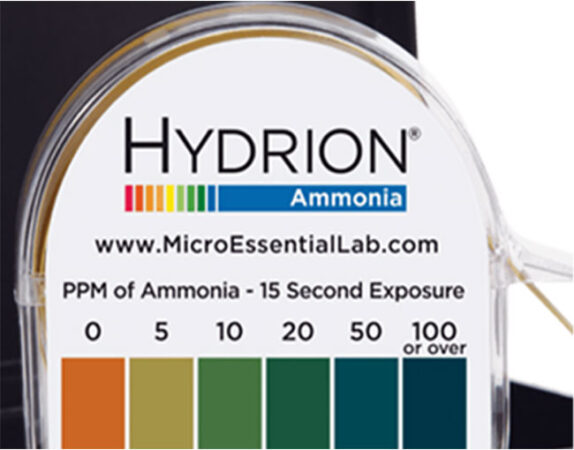
Maintaining bird comfort in the winter
By William Alexander
Features Barn ManagementBird wellness in winter: Insulate, ventilate, monitor. Keep barns warm, air flowing, and ammonia low for a healthy flock.
 It is important to regularly monitor ammonia since humans can become accustomed to levels of ammonia and not realize the levels are increasing.
PHOTO: Hybrid Turkeys
It is important to regularly monitor ammonia since humans can become accustomed to levels of ammonia and not realize the levels are increasing.
PHOTO: Hybrid Turkeys When experiencing cold weather, keeping your barn well insulated without drafts, while producing proper air flow are the first steps to maintaining bird comfort. Secondly, monitoring the ammonia levels and identifying the root cause of increased amounts of ammonia are critical to the health and wellness of the flock.
Minimum ventilation
Controlling the environment in the barn will keep your birds comfortable – no matter the external weather conditions. During the winter months, minimum ventilation is recommended to direct and circulate exterior air into the barn.
Sidewall exhaust fans create a consistent vacuum inside the poultry house to pull in outside air. The incoming cold air should be kept in contact with the ceiling for as long as possible to be blended in with the warm in-house air above the flock. No cool air should come directly in contact with the birds, to avoid chilling and stressing the birds.
The biggest potential risk with negative-pressure minimum ventilation is that when there are any unplanned openings, the house will draw air through every available opening in the building. Unsealed curtains, unused and dirty fans, and improperly sealed end doors are all areas that commonly contribute to heat loss and should be inspected regularly.
Controlling air flow
By properly managing moisture, air flow, and temperatures turkey flocks can keep growing and thriving even during extreme temperatures outside the poultry house. Controlling air flow inside the house is critical. Poor direction of airflow can lead to wet litter, chilled birds, and increased strain on heaters that lead to heightened carbon dioxide and ammonia levels.
When directing air in the barn the goal is to: promote uniform temperatures throughout the house during cold weather; mix warm air in the barn with incoming cold air to reduce humidity; and reduce fuel use and improve litter quality.
Monitoring ammonia
High ammonia levels can have a negative effect on bird health. With extended exposure to ammonia, the immune system becomes suppressed, and birds are more vulnerable to several health risks. It is important to regularly monitor ammonia since humans can become accustomed to levels of ammonia and not realize the levels are increasing.
Ammonia is an irritant when it is inhaled. It can injure/burn the respiratory tract and alter oxygen uptake making it hard to breathe. In cooler weather, ammonia levels increase in the barns due to decreased ventilation rates. Birds can detect ammonia at levels as low as five ppm, and levels of 10 ppm or more start to compromise health and welfare.
Levels over 25 ppm can cause long-term damage to human and bird respiratory systems and poultry food pads. Industry standards recommend maintaining levels below 25 ppm however, we recommend it is best practice to target the 10 ppm or under range.
Ammonia levels should be monitored and tested regularly on a weekly basis. Ammonia test strips and distilled water can be used, or digital readers are also available. Below are step-by-step instructions on how to properly use ammonia test strips.
Ammonia is produced in the litter, and the levels are more concentrated at bird-level. Ensuring dry litter can help control ammonia levels, provides a healthy flock environment, and can reduce the incidence of hock and footpad burns and breast blisters.
Some common practices to maintain dry litter, in addition to using proper ventilation, include top dressing pens with new shavings as needed; moving drinkers daily to prevent the formation of donuts around the drinkers; and tilling litter regularly (weekly up to approximately three weeks before slaughter for female flocks and weekly up to approximately 13 weeks of age for male flocks).
If an issue is found repeatedly it’s essential to identify the root cause. In general, factors affecting ammonia levels surround the environment in the barn, diet, or health of the flock. Keeping your barns properly ventilated will assist with controlling environmental gases. For more information on ventilation and monitoring gases, please see our environmental control resources on our website for more information.

How to use ammonia test strips
- Rip an ammonia strip from the roll.
- Dip the strip into distilled water then hold in the air at bird level.
- Compare the colour on the strip to the legend on the roll box.
- Record the ammonia level.
- If ammonia levels are within the recommended ranges, good work!
- If ammonia levels are above the recommended range, check the environment and adjust ventilation or consider some additional areas to evaluate below.
Print this page